Myths about Orpheus and Eurydice ["Thematic painting"]
Greetings to all lovers of beauty!
With me @maidajulita. Today will be a small pictorial insight into Ancient Greek myth, or rather the legend of Orpheus and Eurydice.
According to legend, Mother Orpheus is an illusion of science, philosophy, and epic poetry - Calliope:

What I love about the image of Giuseppe Fagnani (1819-1873 gg.) - the Italian artist - is a lack of any pretentious, common to many artists from previous periods. No fat amurcs, looking lethargic, majestic movements. Only concern, some detachments and Iliad in hand are one of the epic, its protectors.
Information about Orpheus's father is somewhat contradictory. According to one, he is the son of Eagra, the river god. On the other hand - Apollo himself:
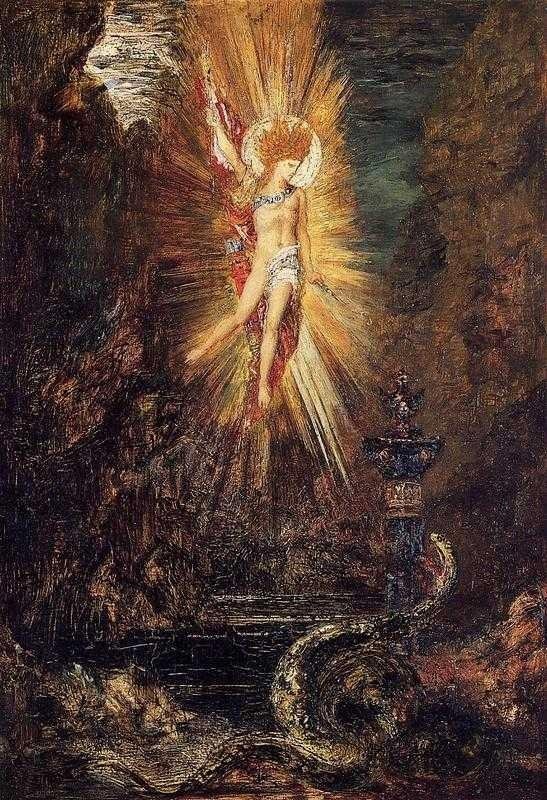
Gustave Moreau (1826-1898) - the French symbolic artist describes the struggle of Apollo in Python - a snake that destroys Delphi. Killed and thrown into a long crevice loit radiates a couple who inhaled Pythia during prophecy. By the way, their name comes from Python.
Apparently it was Apollo who gave Orpheus a harp, and thought (perhaps the mother himself) taught him how to play the instrument:
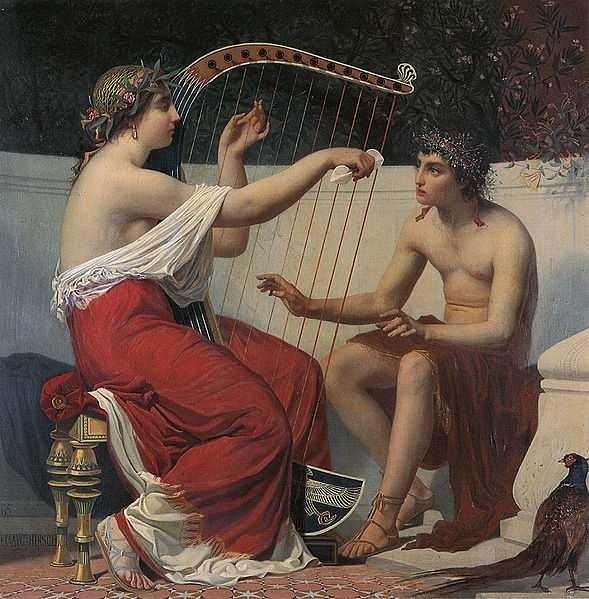
True, both paintings Alexander August Hirsch (1833-1912) - French artist - Calliope taught Orpheus by harp, but these are the details. Some even managed to describe Orpheus with a violin:
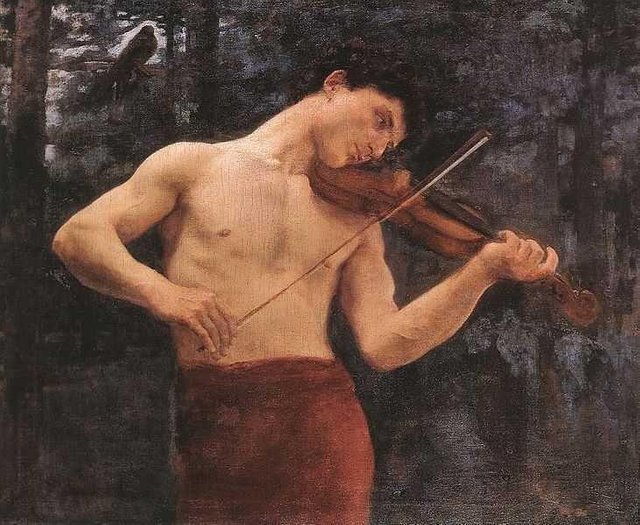
As a Hungarian impressionist artist, Karol Ferenczi (1862-1917 gg.). The main theme of his painting is symbolism and nudity. Therefore, the violin here, apparently, is not the most important thing. The main thing is the picture.
Orpheus was so master of the game on the lute, even the gods were heard by his music. He easily fascinates birds and animals, and the tree draws its roots and follows it:
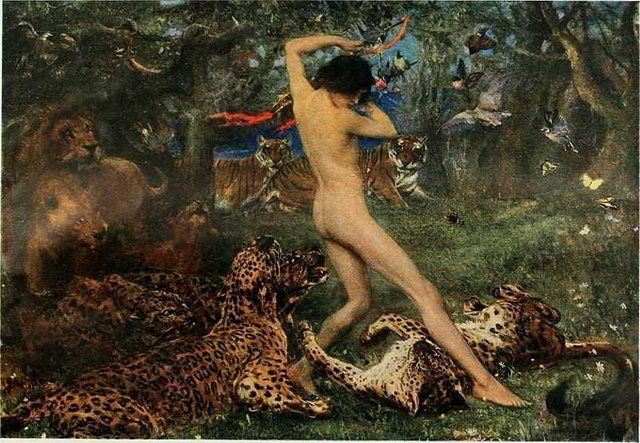
British artist John McCallan Swan (1846-1910) tries to describe precisely the moment of magical influence of the amazing game of Orpheus.
Most interesting is that some researchers believe that there is a very real person, who is an Orpheus prototype, and maybe he even came from India, where he received Brahmanical initiation. The fact is that his name is considered a derivative of orjnoiox, which in his translation means "dark", showing his skin's intelligence, different from the Greeks.
Love Orpheus and Eurydice - at the peak of myths about him. His wife, escaped from a certain robber, was bitten by a deadly snake:
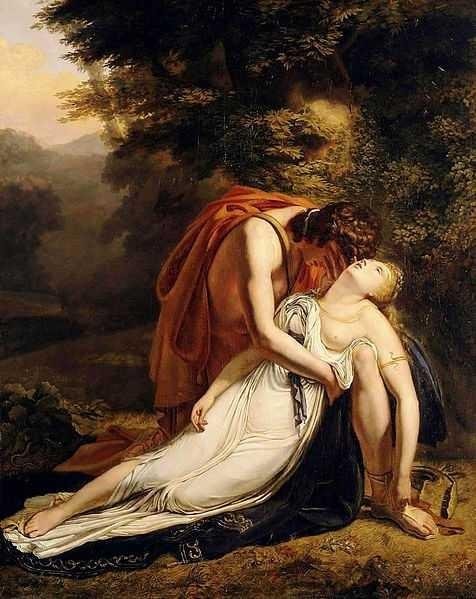
when tragically depicted Ary Scheffer - the artist, whose origin is difficult to identify some (1795-1858 gg.): Parents - Germans, born in the Netherlands and work in France. Mastery of large paintings, but excessive emphasis on the virtues of the naked body, as for me, reduces the level of sadness, and the viewer is pervaded not only plot, as the beauty of the form.
Orpheus did not resign to lose the fall into the realm of Hades, where so won the game from the god of the underworld, and his wife Persephone ...
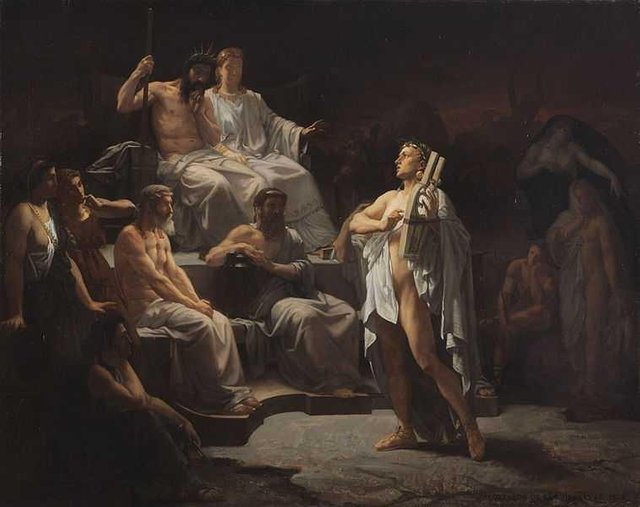
... that they agreed to let him go with him.
I can not get past the Rubens image (1577-1640 gg.) On this issue:
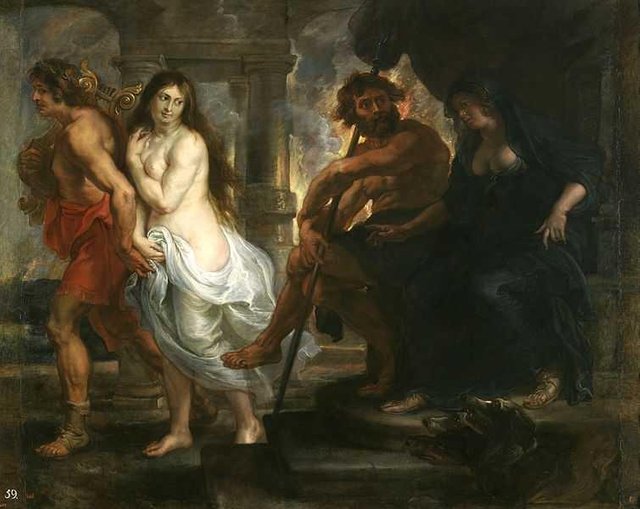
A stifling facial expression. Hades seems to say to his wife: "Do you think ?!" . Persephone seems to have suffered a lot from this woman, and Eurydice looks back with a sly expression, as if to say "I'll be back!" .
Orpheus was given the condition that brought Eurydice with him, he would never turn around:
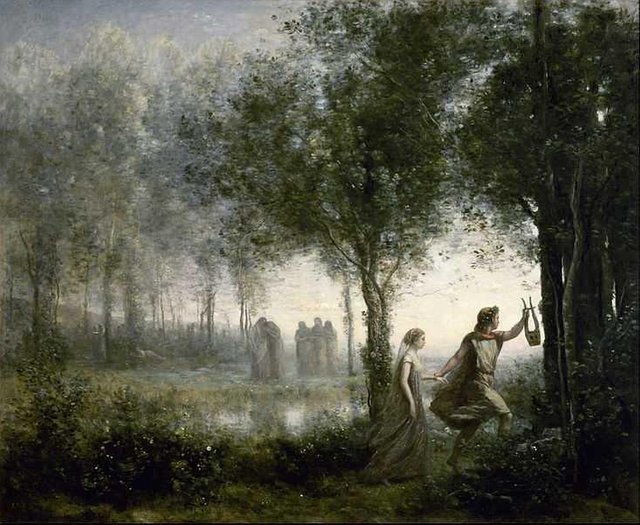
(1796-1875 gg), Jean-Baptiste-Camille Corot - French artists and fans of romance, portrayed scenes in their favorite colors: mixing in a thin silver-gray and pearlescent pearls achieved by the ice sheet. Shades, perhaps, are best suited for this plot: not all are so gloomy, but they do not attract liveliness either.
Along the way back, Orpheus obediently obediently, not looking back, even when Charon hauls them through Styx:
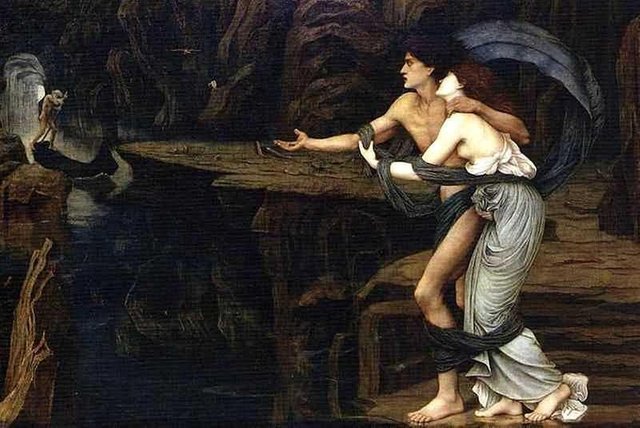
Gathering a number of paintings on the subject, I found that many Pre-Raphaels did not go through it, as did John Roddam Spencer Stanhope (1829-1902), who preferred mythological, allegorical, and biblical stories.
But back to Orpheus. Unfortunately, the closer he gets to the exit to the living world, the more his attention grows on Eurydice: should he follow it? And he could not help looking back. For a moment he saw the face he loved, which with his sigh disappeared forever.
For a long time in his grief, Orpheus roamed the ground, until death followed him. According to one legend, he was killed by lightning, in others - he committed suicide. But there is a third, which he thinks is torn by a woman, whose claim he refused. Yes, a woman in terrible anger!
The genre of French artist Emil Levy (1826-1890) describes this disgusting natural picture very finely:
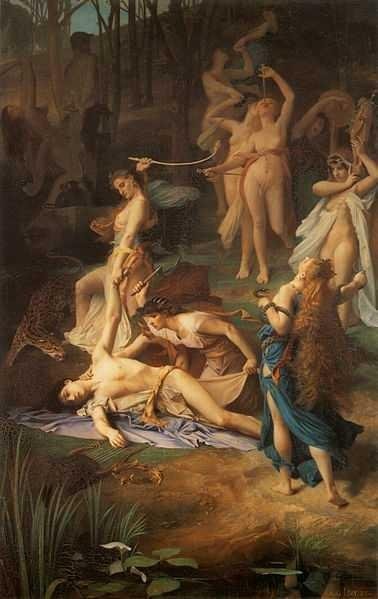
Orpheus's body was buried, and the head, along with the harp, was thrown into the River Gebr, where it was picked up by a nymph:
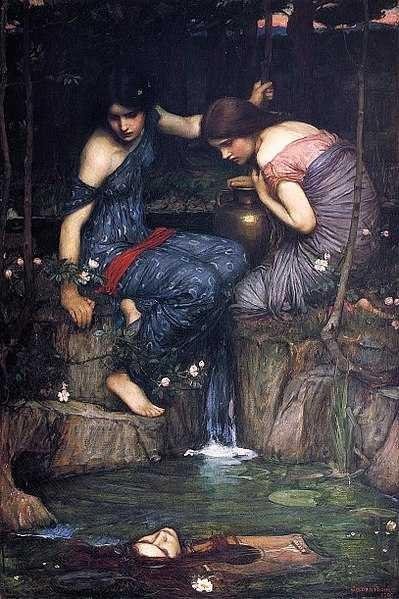
However, what other representatives are described about Pre-Raphaelism in the future - John William Waterhouse (1849-1917).
According to legend, the head of Orpheus served as an oracle for a long time:
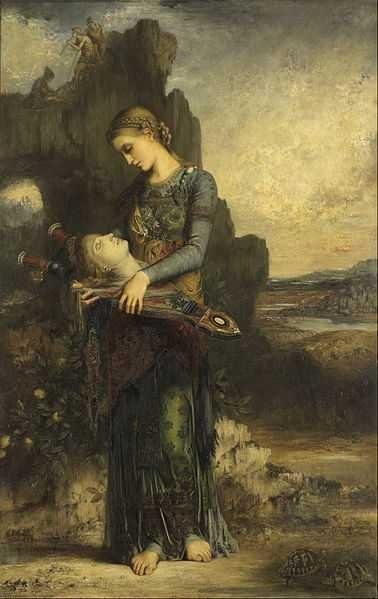
Another picture of Gustave Moreau, full of symbolism, like the Orpheus myth. He himself symbolizes the mystical doctrine of the divine, Eurydice - the human soul, drugged by false knowledge and found to be weak in his ignorance (the underworld). Orpheus - knowledge - is trying to extract it from there, but can not do it, for it ends up not realizing the inner nature of the human soul and trusting little of it. The woman who killed her were all kinds of religions that were part of the same whole, but, intermittently, they destroyed the truth. Lira is a symbol of esoteric knowledge, and the seven strains are symbols of the seven divine truths.
The Greeks are not so simple. Apparently, many of their myths, and not just them, are full of hidden subtex, which is not always easy to achieve.
All artwork presented in the article is in the public domain
Congratulations! This post has been upvoted from the communal account, @minnowsupport, by badribireuen from the Minnow Support Project. It's a witness project run by aggroed, ausbitbank, teamsteem, theprophet0, someguy123, neoxian, followbtcnews, and netuoso. The goal is to help Steemit grow by supporting Minnows. Please find us at the Peace, Abundance, and Liberty Network (PALnet) Discord Channel. It's a completely public and open space to all members of the Steemit community who voluntarily choose to be there.
If you would like to delegate to the Minnow Support Project you can do so by clicking on the following links: 50SP, 100SP, 250SP, 500SP, 1000SP, 5000SP.
Be sure to leave at least 50SP undelegated on your account.